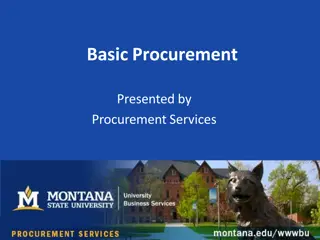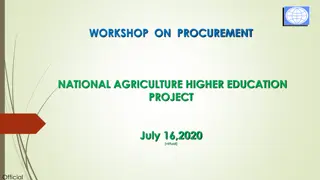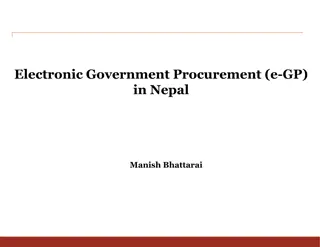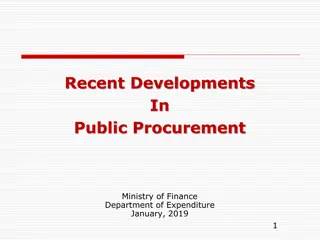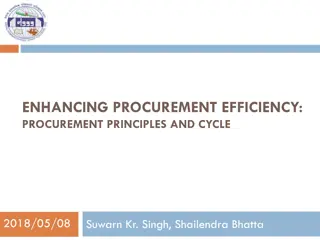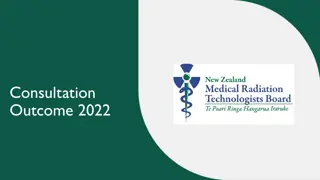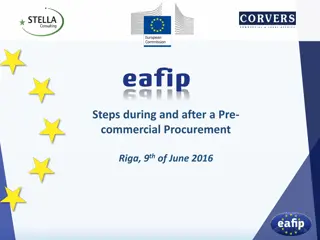Jointly Organized Innovation Procurement Workshop for Security Practitioners
A workshop by MEDEA, iProcureNet, and CIVILnEXt EU Funded projects supported by the European Union's Horizon 2020 program. It focuses on the PCP process, relations between players, legal issues in each phase, and pre-tendering steps.
Download Presentation

Please find below an Image/Link to download the presentation.
The content on the website is provided AS IS for your information and personal use only. It may not be sold, licensed, or shared on other websites without obtaining consent from the author.If you encounter any issues during the download, it is possible that the publisher has removed the file from their server.
You are allowed to download the files provided on this website for personal or commercial use, subject to the condition that they are used lawfully. All files are the property of their respective owners.
The content on the website is provided AS IS for your information and personal use only. It may not be sold, licensed, or shared on other websites without obtaining consent from the author.
E N D
Presentation Transcript
INNOVATION PROCUREMENT WORKSHOP INNOVATION PROCUREMENT WORKSHOP FOR SECURITY PRACTITIONERS FOR SECURITY PRACTITIONERS A jointly organized workshop by MEDEA, iProcureNet and CIVILnEXt EU Funded projects These projects have received funding from the European Union s Horizon 2020 research and innovation programme under grant agreements No 787111 (MEDEA), No 832875 (iProcureNet) and No 786886 (CIVILnEXt).
PCP Process Outline Development and Evaluation of Products during Three Phases Phase 1 Solution TRL 4- 6 reaching at the end of Phase 3 TRL 6-8
Relations between the different players PCP players Contractors/ Successful Tenderers Buyers/procure ment offices Tenderers End Users Lead Procurer
Legal Issues related to each phase PCP players Tenderers Buyers JPA Lead Procurer Successful Tenderers Call for Tenders Framework Agreement Specific Phase Contract Phase 1 Phase 2 Phase 3
Pre Tendering Process steps sequence 4 4. Pre-Commercial Procurement contract implementation : Manage and monitor the execution Issue call off tenders Issue payments If needed, deal with modification or termination of contract Close the contract 3. 3. Submission of Tenders, opening and selection: Open Bids received within deadline Evaluate Bidders against exclusion/selection criteria Evaluate Bids against award criteria Awarding of framework agreement and Phase contracts Notify tenders and publish the award 2. Call for Tender Launch 2. Call for Tender Launch: Release a Contract Notice Start of the tendering process Raise awareness towards the PCP Allow for enough time prion to the tender submission Publish ToR requesting: Project Techical Description Project Plan, methodology, team Commercialization plan Price (Incorporating the IPR dimension) Advertise the contract Provide clarifications to potential tenderers 1. 1. Preparation and planning: A) Needs Identification Identify unmet need or set of need Transform this need into a set of requirements / specifications open enough to leave room to the industry to perform R&D Engage stakeholders Choose the procurement procedure Identify the Verification and Validation Strategy Conduct prior art analysis- Investigate IPR, Regulation, Standardization, Certification Build Business Case B) Open Market Consultation & preparation of tender Publishing a PIN Analyze market (OMC activities ) Prepare the tender documents
PCP Preparation and planning Tender Specifications It all starts with a genuine, concrete need to improve the quality and/or efficiency/cost of services of public interest offered. Prepare tender Prepare tender specifications based on specifications based on a hybrid model which a hybrid model which takes into consideration takes into consideration the findings of the open the findings of the open market consultation market consultation
PCP Preparation and planning Prior Art Analysis Once the needs of the public procurers have been identified, a prior art analysis should be conducted to confirm whether the identified need(s) are indeed "unmet" needs. Prior art analysis identifies "all information available in the public domain (existing products, ongoing product development and published ideas) whether IPR protected or not. If the prior art analysis reveals that there are already solutions available on the market that can meet the need or will already become available before it is possible to complete the planned procurement, then there is no more need for an innovation procurement and an existing solution can be procured instead.
PCP Preparation and planning Procedure Selection One of the main choices in public procurement is to determine whether to use one contract or a number of separate contracts or lots , which may be awarded and performed by different economic operators. Savings derived from economies of scale may promote the use of a single contract, while the diversity resulting from multiple contracts or lots can enhance competition and increase efficiency. Types of procurement procedure: In the Open Procedure the tendering process conducted in 1 stage ->all information published in the Term of Reference document The Restricted Procedure is conducted in 2 stages: Tenderers Solvency and Financial and Technical Evaluation
PCP Preparation and planning Procedure Selection STEP 1 (Tenderers Solvency STEP 1 (Tenderers Solvency Qualitative Selection) Terms of Reference Public version published with all necessary information in order for the industry to understand the scope of the tender. Economic operators submit a request to participate containing all the information requested in the tender document. The economic operators are cleared to pass on to STEP 2 based on the following: Exclusion criteria : Exclusion criteria : Economic operators will be excluded from participation if they have been the subject of a conviction by final judgment for one of the following reasons (indicative): Participation in a criminal organisation, Corruption, Fraud, Terrorist offences or offences linked to terrorist activities Selection criteria Selection criteria are primarily related to (i) the suitability of the bidders to perform the professional activity, (ii) the economic and financial standing of the bidder and (iii) the technical and professional ability to perform into the contract Qualitative Selection)
PCP Preparation and planning Procedure Selection Non-Disclosure Agreement needs to be signed for the information they are going to receive in Step 2. STEP 2 (Financial and Technical Evaluation STEP 2 (Financial and Technical Evaluation Award of the Contracts) Award of the Contracts) During STEP 2, a restricted version of the tender document will be sent to the successful requiring submission of tenders. The Terms of Reference Restricted version is complementary to the Public version and defines in detail the Operational Scenarios, the operational/technical requirements, the specifications, the award criteria that will be used to evaluate the tenders in order to extract the most economically advantageous ones on a best price-quality ratio The evaluation process of the tenders is carried out by relevant committees that result in a unique and joint evaluation report.
PCP Preparation and planning Procedure Selection Maximum points Weighti ng Weighted award criteria Phase 1: Solution design 1.Contract Implementation Feasibility of the Project plan and schedule Methodology of the Project, including risk management and quality assurance 2.Functional Quality Criteria 10% 5 5 The award criteria are formulated in compliance with the Treaty principles of equal treatment and transparency : Price Other criteria based on the quality, impact and implementation of the submitted proposals. The impact part impact part could refer to the added value for society/economy, the soundness of the commercialization plan etc. The implementation part implementation part could refer to the quality and effectiveness / appropriateness of the proposed R&D work plan and resource allocation. 45% Objective 1 1.1: Describe how your solution will achieve this Objective. 1.2: Describe how your solution will be innovative in this domain. 3 Objective 2 - 1.1: Describe how your solution will achieve this Objective. 1.2: Describe how your solution will be innovative in this domain. 5 Objective 3 - 1.1: Describe how your solution will achieve this Objective. 1.2: Describe how your solution will be innovative in this domain. 5 Objective 4 - 1.1: Describe how your solution will achieve this Objective. 1.2: Describe how your solution will be innovative in this domain. Objective 5 - 1.1: Describe how your solution will achieve this Objective. 1.2: Describe how your solution will be innovative in this domain. Objective 6- 1.1: Describe how your solution will achieve this Objective. 1.2: Describe how your solution will be innovative in this domain. Objective 7 1.1: Describe how your solution will achieve this Objective. 1.2: Describe how your solution will be innovative in this domain. Objective 8: 1.1: Describe how your solution will achieve this Objective. 1.2: Describe how your solution will be innovative in this domain. 7 5 7 3 10
PCP Preparation and planning Verification &Validation Strategy In the context of Verification and Validation process, we need to define Key Performance Areas (KPAs), important in determining whether a system has been improved and they thematically group the indicators against which all participating solutions will be assessed which will be used to assess : Satisfactory Completion Conditions (payment purposes ) Successful Completion Conditions (eligibility for bidding for next Phase) Include the underlying pass criteria and grading scale.
PCP Preparation and planning Open Market Consultation Powerful instrument to close gap between demand and supply sides Creates awareness across industry about procurers needs Sheds light on: Whether the desired solution is already available on the market or not Market s ability to accomplish what s needed Market s capacity to achieve it in a timely and costly efficient manner The suitable procurement model Project feasibility
Call for Tenders Launch_1 1. Release of the Contract Notice. is published by the Contracting Authority in the Official Journal of the European Union, The said document is in English indicating the way that potential tenderers can take part in the request for tenders . is promoted and advertised widely 2.Tender Documents should made available to the project website (free download) according to the plan and the procedures defined.
Call for tender Launch_2 The request for tenders is inviting all interested economic operators to participate in the tendering process and: takes into consideration the findings of the open market consultation and describes the common challenge Describes the process for the evaluation and selection of the tenderers for the first PCP Phase, the intermediate evaluations for each following PCP Phase, the minimum requirements that subcontractors must comply with during the PCP and the arrangements for intellectual property rights, confidentiality, publicity, rules on applicable law and dispute settlement. is assumed as the principal document of the Tender and all its provisions shall remain fully valid and applicable during the whole tender process Before the deadline to deliver the proposals, the Buyers Group should be engaged in supporting the potential contractors, namely by answering questions related to the call for tender , via webinar and industry events
Submission of tenders, opening and selection_1 Submission of tenders is made by electronic means and opening The evaluation process is carried out with the following six steps: Step 1 Checking whether the Exclusion Grounds apply to the Tenderer Step 2 For tenderers passing Step 1, assessing whether the tenderer has the necessary capacities to perform the contract, on the basis of the selection criteria Step 3 For tenderers passing Step 2, evaluating the tender based on the on/off award criteria Step 4 For tenderers passing Step 3, evaluating the tender based on the weighted award criteria Step 5 Opening of the Economical offers Step 6 Final ranking
Submission of tenders, opening and selection_2 Tenderers are notified for their scores and Framework Agreements are signed with the successful ones. Subcontracting awards to tenderers that are sufficiently evaluated from the technical and financial perspective. After that, framework agreements (one agreement per selected tenderer) are signed between the Lead Procurer and the selected tenderers, setting the terms and conditions. Release of the Contract Award Notice within 48 days after conclusion of the framework agreements, by the CA in the Official Journal of the European Union.
Pre-Commercial Procurement Phase 1 Solution Design - Key Actions Each of the participating R&D providers will be requested to deliver the outputs of their work (e.g. copies of designs, drawings, calculations , plans etc.) along with an End-of Phase 1 report incorporating all activities of the phase as well as a presentation of the relative results. R&D providers will be engaged in the design of the potential solution and verify the technical, economic and organizational feasibility of the proposals in order to address the PCP challenge defined in the pre- tendering phase. A business/commercialization plan should also be requested. The Evaluation Committee will assess the aforementioned results and upon indication of a satisfactory completion, will provide a recommendation regarding their adequacy for payment purposes. The Evaluation Committee will also assess which R&D providers have successfully completed the current phase and thus are eligible for bidding towards phase 2. Upon successful completion of the evaluation process, the board will proceed to the awarding of phase 2 contracts.
Pre-Commercial Procurement Phase 2 Prototype Development - Key Actions Each of the participating R&D providers will be requested by the hosting procurers to deliver the outputs of their work (e.g. software code of simulations, data lists, updated lists of IPRs etc.) along with an End-of Phase 2 report incorporating all activities of the phase in discussion along with a presentation of the relative results (e.g. product specs, test prototype production plan etc.). R&D providers will be engaged in the development of a prototype and will subsequently test the said prototype in lab conditions. The testing process will take place in either the provider s lab or the procurer s lab as selected by the procurer A business/commercialization plan should also be requested. The Evaluation Committee will assess the aforementioned results and upon indication of a satisfactory completion, will provide a recommendation regarding their adequacy for payment purposes. The Evaluation Committee , upon successful completion of the evaluation, will proceed to the awarding of phase 3 contracts The Evaluation Committee will also assess which R&D providers have successfully completed the current phase and thus are eligible for bidding towards phase 3.
Pre-Commercial Procurement Phase 3 Dev./Test of ltd. set of products - Key Actions Each of the participating R&D providers will be requested by the hosting procurers to deliver the outputs of their work (e.g. completed series of tested end-products, updated lists of IPRs) along with an End-of Phase 3 report that will incorporate all activities of the phase in as well as a presentation of the relative results (e.g. final product specs, tested products/ services production plan, refined production/commercialization plans etc.). The successful phase 2 R&D providers will produce an initial limited set of products /services and after testing by the procurer in relevant environments / operational conditions. Such field-testing results will then be incorporated in updating the product / producing a final limited set suitable for large scale production (following the PCP). The Evaluation Committee will assess the aforementioned results and provide a recommendation regarding their adequacy for payment purposes. The Evaluation Committee will also assess which R&D providers have successfully completed the current phase
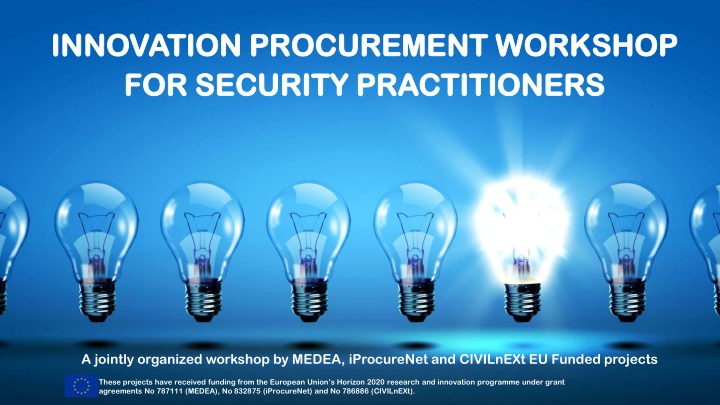

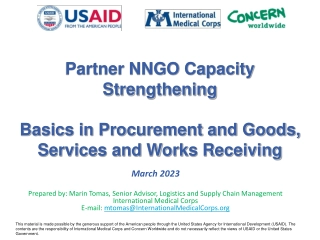
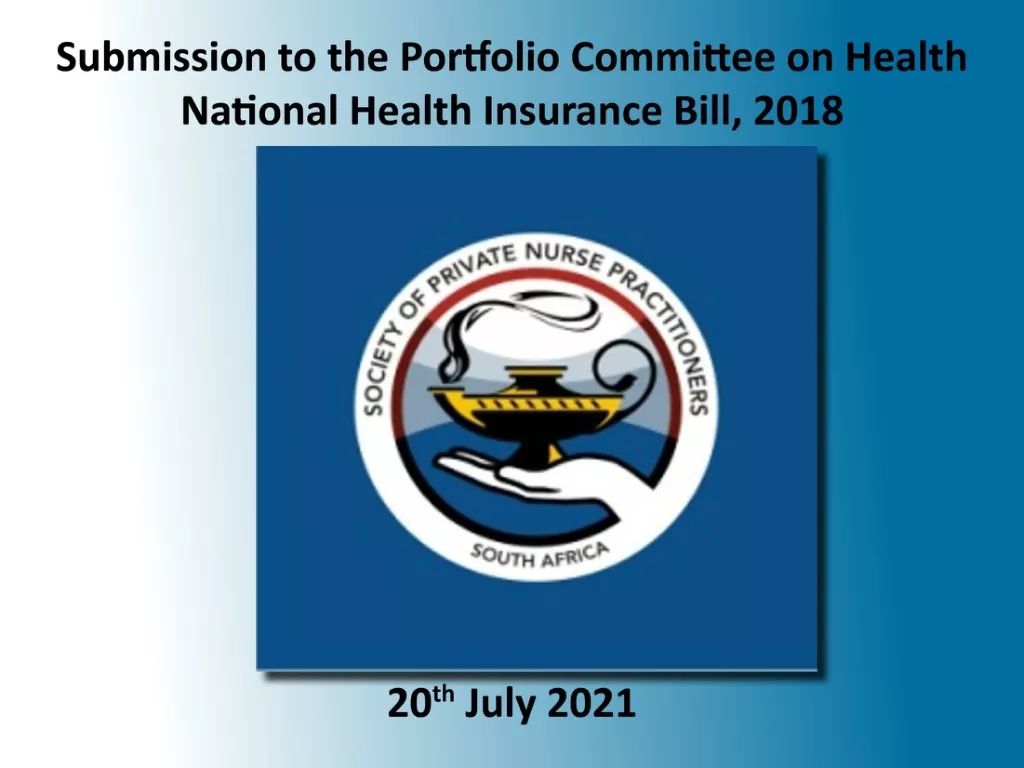

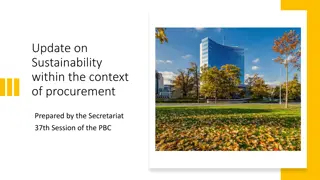



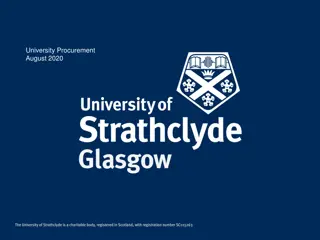
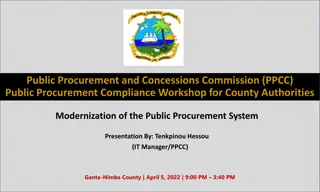
![Comprehensive Overview of Corruption Watch Submission on Public Procurement Bill [B18B-2023]](/thumb/138344/comprehensive-overview-of-corruption-watch-submission-on-public-procurement-bill-b18b-2023.jpg)
